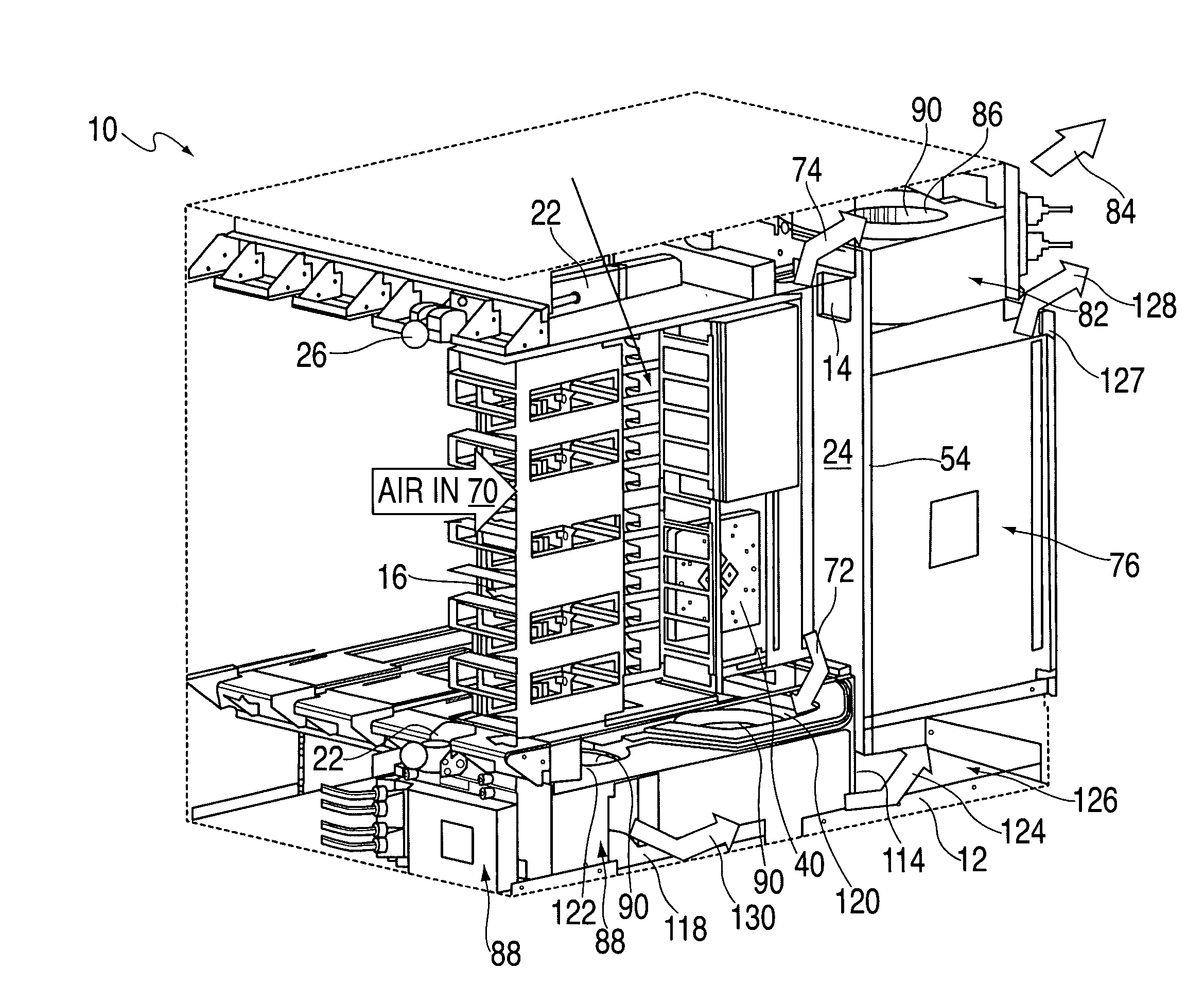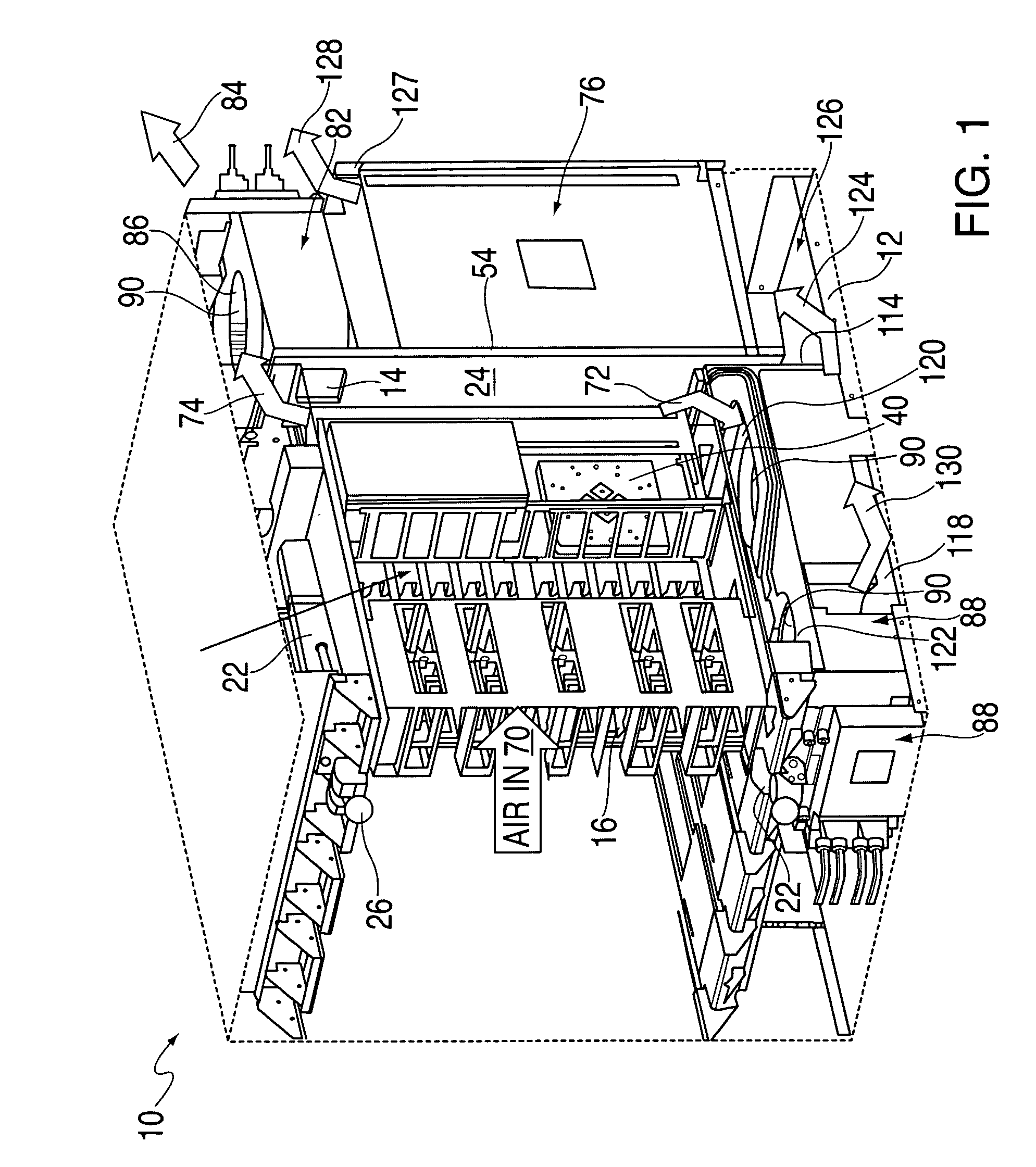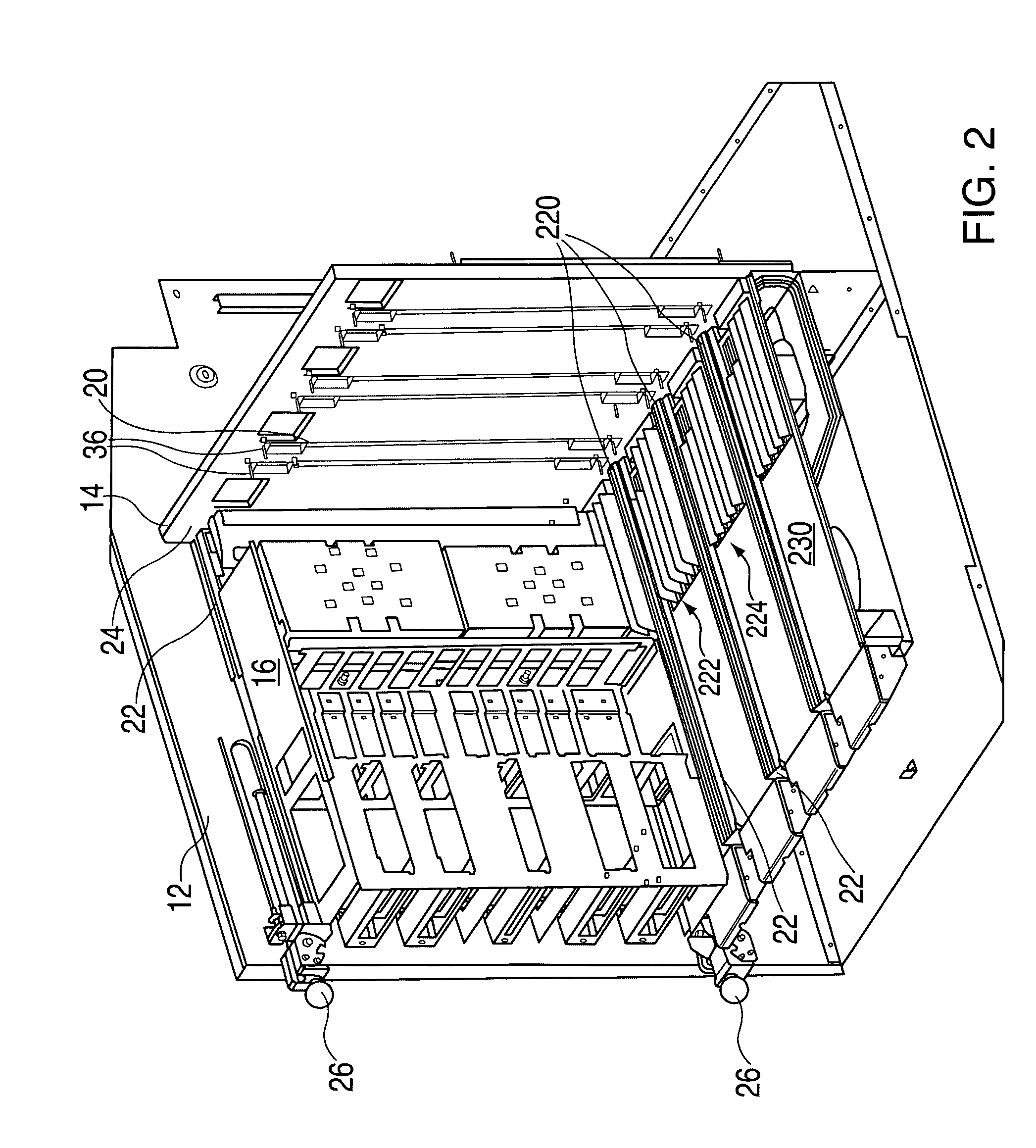System for airflow management in electronic enclosures
a technology of airflow management and electronic enclosure, which is applied in the direction of electrical apparatus casings/cabinets/drawers, lighting and heating apparatus, instruments, etc., can solve the problems of difficulty in cooling these cards and cec boards, ics generate significant amounts of heat, etc., to facilitate installation and removal of daughters, facilitate front-to-back airflow, and facilitate front-to-back airflow
- Summary
- Abstract
- Description
- Claims
- Application Information
AI Technical Summary
Benefits of technology
Problems solved by technology
Method used
Image
Examples
Embodiment Construction
[0032]The invention will now be described in more detail by way of example with reference to the embodiments shown in the accompanying figures. It should be kept in mind that the following described embodiments are only presented by way of example and should not be construed as limiting the inventive concept to any particular physical configuration.
[0033]Further, if used and unless otherwise stated, the terms “upper”, “lower”, “front”, “back”, “over”, “under”, and similar such terms are not to be construed as limiting the invention to a particular orientation. Instead, these terms are used only on a relative basis. For the purposes of the present disclosure, the terms printed circuit board (PCB) and printed wire board (PWB) are equivalent terms.
[0034]FIGS. 1 and 2 illustrate an exemplary embodiment of the invention, which includes a so-called central electronics complex 10 (CEC) of a computer system. The CEC 10 is comprised of an enclosure (such as a cage 12), a backplane or midplan...
PUM
 Login to View More
Login to View More Abstract
Description
Claims
Application Information
 Login to View More
Login to View More - R&D
- Intellectual Property
- Life Sciences
- Materials
- Tech Scout
- Unparalleled Data Quality
- Higher Quality Content
- 60% Fewer Hallucinations
Browse by: Latest US Patents, China's latest patents, Technical Efficacy Thesaurus, Application Domain, Technology Topic, Popular Technical Reports.
© 2025 PatSnap. All rights reserved.Legal|Privacy policy|Modern Slavery Act Transparency Statement|Sitemap|About US| Contact US: help@patsnap.com



